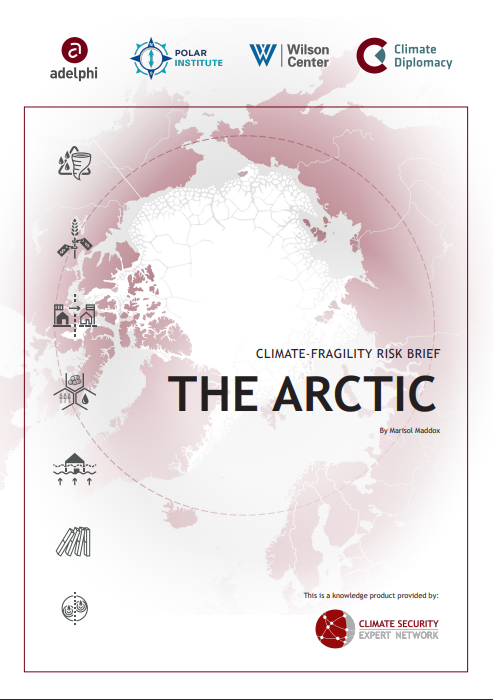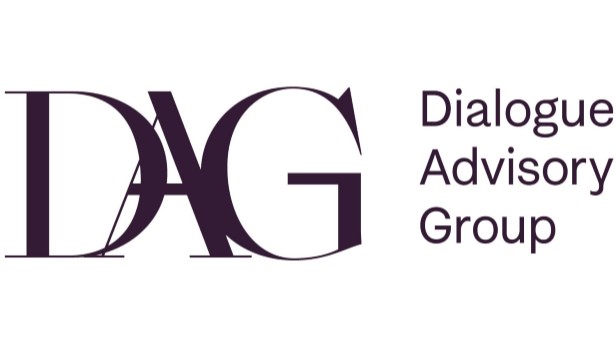The Climate-Fragility Risk Brief: The Arctic highlights the rapid pace of climate change in the Arctic, occurring three times faster than the global rate. This change presents substantial risks, including climate change-related tipping points and geopolitical and militarization threats. The Arctic has traditionally been a region of peace and cooperation; however, without proper risk mitigation and climate adaptation efforts, the opportunities for economic development may be overshadowed by the destabilizing effects of climate change.
Climate Change Impact
- Accelerated warming: The Arctic experiences climate change three times faster than the global average, leading to rapid melting of glaciers, sea ice loss, and permafrost thaw.
- Cascading consequences: These changes impact ecosystems, livelihoods, traditional cultures, and infrastructure, increasing vulnerability and fragility.
Fragility Risks
- Geopolitical tensions: Melting sea ice opens new resource extraction and navigation opportunities, potentially leading to increased competition and resource disputes between Arctic states.
- Internal instability: Disruptions to traditional livelihoods and cultural practices can exacerbate social tensions and unrest in Arctic communities.
- Migration and displacement: Environmental changes may force communities to relocate, straining resources and infrastructure in other regions.
- Economic instability: Declining fisheries and disruptions to tourism due to changing landscapes can affect regional economies.
Opportunities
- Adaptation and resilience: Investing in adaptation strategies and building community resilience can mitigate the negative impacts of climate change and foster sustainable development.
- Collaboration and cooperation: International cooperation on research, resource management, and conflict prevention is crucial for addressing shared challenges in the Arctic.
- Renewable energy potential: The Arctic’s wind and solar resources offer clean energy development and economic diversification opportunities.
Overview
INTRODUCTION
Outlines the risks, opportunities, and the need for risk mitigation and climate adaptation. Discusses the interaction of climate change with security, ecosystem health, and geopolitical factors, emphasizing Russia’s vulnerability to domestic unrest due to escalating climate change. It provides an understanding of the relationship between climate change, security, and geopolitical dynamics in the Arctic.
CLIMATE CONTEXT
Discuss their global impact, highlighting Arctic tipping points like permafrost thaw, Greenland ice sheet stability, and the AMOC. It further emphasizes the potential threats if emissions are not effectively controlled. The section establishes the urgency and interconnected impacts of climate changes in the Arctic and globally.
SOCIO-ECONOMIC & POLITICAL CONTEXT
Explains the challenges due to climate change, threatening its governance and stability. The Arctic Council plays a significant role in cooperative efforts. Economic development, particularly in the blue bioeconomy sector, is gaining momentum but comes with environmental risks. There is an urgent need to adapt governance and legal mechanisms to address the changes in the Arctic due to global warming.
CLIMATE-FRAGILITY RISKS IN THE ARCTIC
Examines the risks of climate change in the Arctic, including increased fragility, with Indigenous communities most affected. It highlights the threats of changing migration and the insufficient international risk mitigation efforts. The potential use of geoengineering technology and risks from increased Arctic economic activity, including criminal opportunism, are addressed. It concludes with the urgent need for policy actions and global efforts to mitigate these risks, ensuring Arctic stability and security.
ENTRY POINTS TO REDUCE CLIMATE-FRAGILITY RISKS
Outlines key strategies for addressing the compound risks of climate change in the Arctic region. Firstly, it emphasizes the importance of cutting emissions through international cooperation and increasing carbon sequestration. Furthermore, it advocates for strengthening the circular economy to reduce environmental impacts and promote sustainability. Additionally, it underscores the need to deepen dialogues among Arctic states and enhance governance structures to address the emerging challenges of regional changes. In conclusion, the section provides actionable recommendations for policymakers to mitigate climate-related risks and promote resilience in the Arctic region.




